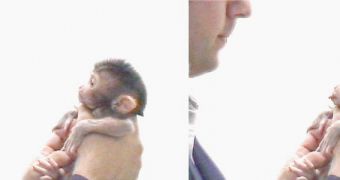A group of scientists believes it may have discovered one of the mechanisms underlying the development of autism. The condition, which affects numerous children around the world, is being fervently researched, but progress is generally slow.
People who suffer from this condition tend to exhibit impaired social skills, and to be unable to communicate with other emphatically. They have a hard time figuring out what the other person is feeling or experiencing, and this is why sufferers may came off as rude.
But experts say that it may all come down to malfunctions in the mirror neuron system. These special nerve cells are the basis of circuits that enable us to understand and anticipate the desires and actions of others, and also to rally ourselves to their thought processes.
Without this ability, we would have no chance of being compassionate, emphatic, or capable of understanding what a person has been through. According to the new study, this is precisely what's happening in autism.
The team behind the new work says that developmental abnormalities in this system are to be blamed for the onset of this mental disorder. But the researchers are quick to point out that the mirror neurons of autistic patients may in fact have had their development delayed, rather than stopped entirely.
Details of the new research appear in a scientific paper published in the latest issue of the esteemed journal Biological Psychiatry, Science Blog reports. The main implication this study carries is that drugs acting on this neural system could increase autistic patients' social function.
“While most of us have their strongest mirror activity while they are young, autistic individuals seem to have a weak mirror system in their youth, but their mirror activity increases with age, is normal by about age 30 and unusually high thereafter,” explains lead study author Dr. Christian Keysers.
“The finding of late developing circuit functions could be very important. One wonders whether the recent breakthroughs in the genetics of autism could help to identify causes for the developmental delays,” adds Dr. John Krystal.
“This type of bridge might help to identify novel treatment mechanisms for autism,” says the expert, who is the Editor of Biological Psychiatry.
What scientists need to do know is focus on developing a method of using the new data to elicit actual changes in the minds of autistic patients. Finding a way to boost the function of mirror neurons could increase sufferers' chances of being able to function appropriately in society.

 14 DAY TRIAL //
14 DAY TRIAL //